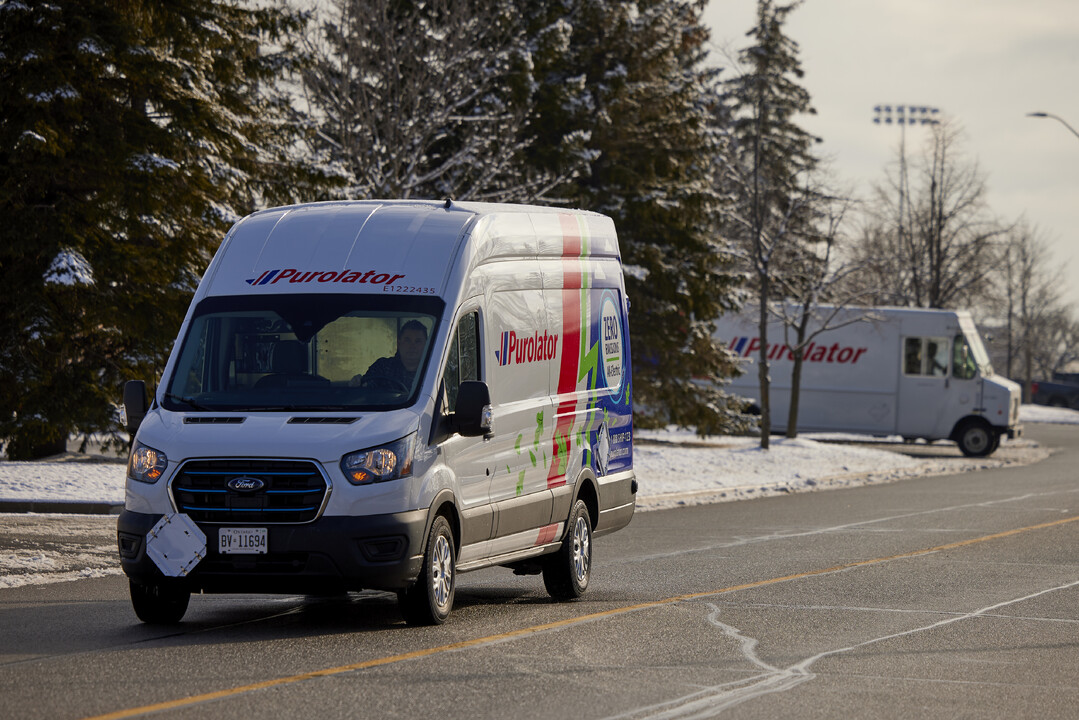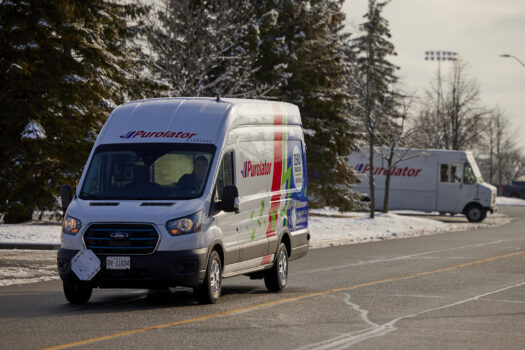Paul TessySenior Vice President, Purolator International
When it comes to how companies choose delivery partners, it’s important to consider some of the challenges and distinctions in Canada that influence how companies make inroads into the market. Here, I take a deeper dive into overall innovation and its closely related cousin, sustainability.
Any shipping company can claim to be active in either area, but as I mentioned in an earlier article, forward-thinking delivery partners are the ones who actually exhibit solutions proven to boost efficiency, reliability, and convenience across the shipping and receiving continuum.
At a high level, the following are some advances that help set leaders apart within the Canadian shipping market.
Prioritizing volume and efficiency
With a sharp recent rise in e-commerce, moving goods over borders and across provinces quickly, safely and reliably has never been more pressing. Here, robust infrastructure and new technology can be a game changer. For example, as part of our five-year growth and innovation strategy, Purolator opened a new National Hub in Toronto last year capable of processing up to 70,000 parcels per hour – tripling our previous capacity. Housed within this hub is technology that can unload a trailer in under 10 minutes – up to 12,000 parcels per hour, 10 times what could be done manually.
Such an advanced sortation facility with innovative automation is something that I truly feel moves the dial when it comes to that trifecta of innovation – efficiency, reliability, convenience.
Looking for ways to pivot
Innovations that support flexibility during peak times ensure optimal service by increasing sort capacity. Mobile dock expansions and inflatable domes are two examples of temporary yet effective innovations that can be deployed as needed. Both enable additional network capacity without the need to build a brick-and-mortar hub.
Purolator’s mobile dock bolsters capacity by adding 10 routes per delivery wave with the ability to operate as a standalone unit. Similarly, inflatable pop-up hubs increase capacity during heavy shipping periods for maximum speed, scalability and flexibility. By inflating the dome wherever and whenever needed, we can erect an on-demand satellite terminal in hours – one that allows trucks to dock from the exterior.
A strong delivery partner must have the technological capability to pivot to meet fluctuating volumes and unique service situations, including emergencies. Innovations like those described here do exactly that.
Listening to the customer
Innovations that sustain a high level of customer experience must meet people where they are and be available when required – and a delivery partner must have such processes in place.
In peak times, Purolator’s Mobile Quick Stops are purposefully placed near homes and offices in urban neighborhoods, inside busy shopping malls, and close to key transit hubs – reaching as many people as possible. This initiative streamlines that critical last mile, offering flexible pick-up hours and a convenient alternative to home delivery.
Similarly, Quick Stop Kiosks allow consumers to prepare and ship their packages, pay with debit, credit, Apple or Google Pay (at select locations) from many convenient locations with flexible hours. Customers can also access parcel lockers for convenient 24/7 package pickup. “If you build it, they will come” goes the famous line from Field of Dreams. In the case of Canadian consumers, that’s certainly the case with more than 285,000 individuals accessing our flexible self-serve shipping options in 2022 alone.
Embracing sustainability
Demonstrating a forward-thinking mindset is no better defined than through a focus on sustainability. A commitment to ESG principles is now a fundamental aspect of innovation and company culture, and an ideal delivery partner should be taking legitimate strides in this area.
In our industry there is a rising demand from consumers, customers, stakeholders and partners to commit to sustainable products and practices. For shipping companies, there is a direct relationship with emissions and thus a tangible opportunity to reduce carbon footprints and make positive changes to how we work. Meanwhile, doing so is also simply good business. Many surveys show that Canadian shoppers prefer to buy from companies with eco-friendly reputations – including a 2022 poll that found that 76% of adults are more likely to trust and be loyal to companies that actively address environmental issues.
To sort out greenwashing from legitimate action, delivery partners must have clear goals and be unafraid to be aggressive. At Purolator, for instance, our long-term goal is net-zero emissions by 2050 and our near-term goals, by 2030, include slashing electricity emissions by 100 per cent, reducing scope 1 and 2 emissions by 42%, and diverting 70% of waste from landfill. We also recently announced our plans to invest $1 billion to electrify our Canadian network, including plans to purchase more than 3,500 electric vehicles.
Delivery companies can’t do it alone, though, as achieving sustainability goals requires partnerships with industry leaders in various disciplines from engineering to logistics to manufacturing to project management. The best form of innovation requires collaboration, and learning from one another.
I’ll be unpacking more in this series around the Canadian market, and look forward to hearing your thoughts.
Written by Paul Tessy, Senior Vice President, Purolator International


